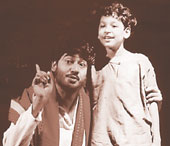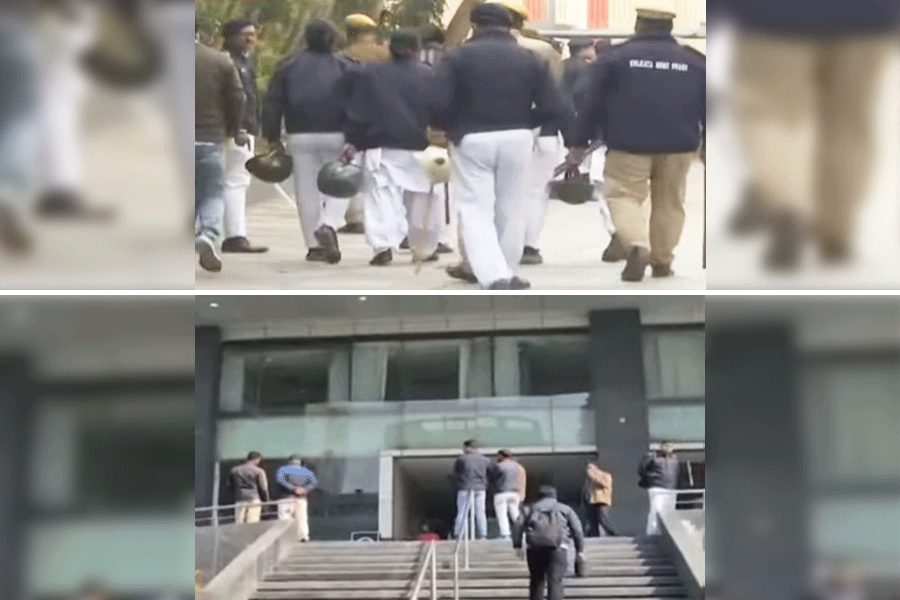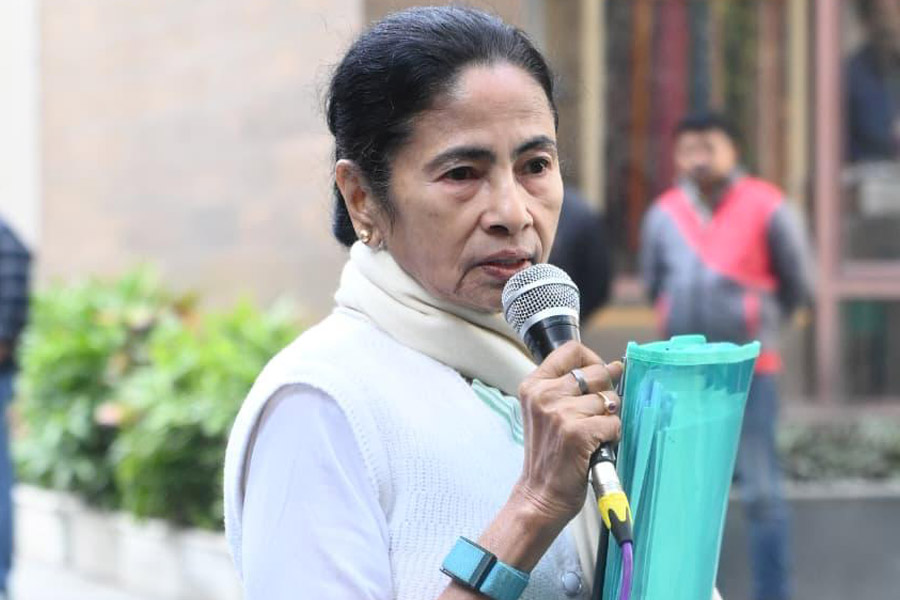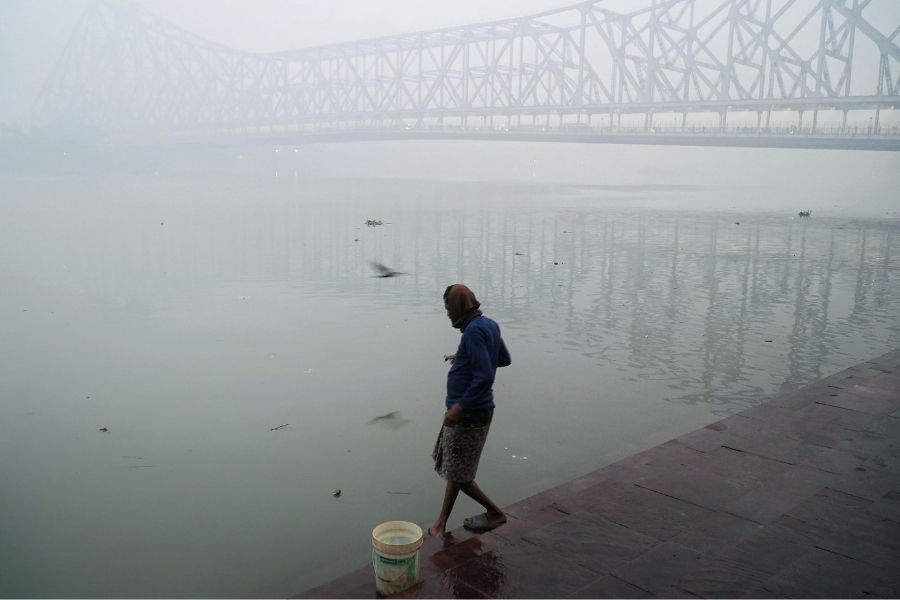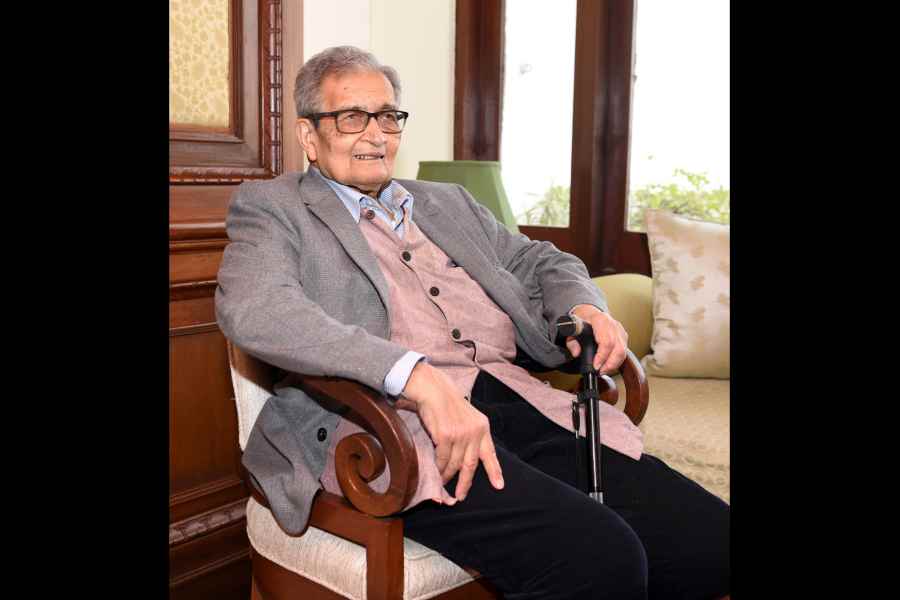 |
Tagorean drama goes through regular periods of ebb and flow. Right now it seems like high tide, with about half a dozen new productions on view. Swapna-sandhani’s Dakghar (picture) definitely merits attention on account of director Koushik Sen’s innovative contemporization, though he mistakenly attributes the play to “a time when verse drama was enjoying a revival in Europe”. On the contrary, prose had become the accepted theatrical medium of the first two decades of the 20th century.
Dakghar opens with the sight of Sanchayan Ghosh’s set, constructed like a horizontal triangle rather than the normal rectangle, the apex formed by two sides meeting upstage at the centre of the backdrop. The two converging white walls and ceiling create not just a confining effect but also resemble a sanitized bubble or enclosed tomographic dome, as opposed to the usual liberating spiritual associations of white. Inside stand Amal’s toys, other playthings and a beanbag on which he lies whenever he feels tired, but no clichéd bed. Behind, he sees the backlit shadows of people passing by in the real world outside.
The politics of today’s Bengal intrudes — Amal gets to hear a procession of protesters shouting for their land — but other than that, Sen does not interfere with Tagore’s text. Nonetheless, he does bring it up to date: the Kabiraj is a regular doctor (albeit with an excessively childish bag), the Daiwala looks lost, surrounded by fast food in tetrapacks, the Prahari wears camouflage fatigues, the village headman is a greasy speechifying politician.
It almost seems like Amal’s role had been awaiting young Riddhi Sen, whose parents had placed him on stage as soon as he could walk, and in acting he has gone from strength to strength before reaching double digits in age. I am sure the rest of the cast will agree that this show revolves around him — perfectly natural, charming yet vulnerable, not a word tripped over or gesture extra — the first of many brilliant lead performances to come, one hopes.
Chirakumar Sabha is an all-time favourite in the Tagorean dramatic canon, so Durgadas Smriti Sangha’s selection of it does not surprise. (In passing, we should note that this troupe, founded in 1945, must be one of the oldest extant groups in Calcutta.) To their credit, Tirthankar Chattopadhyay directs this romantic comedy-cum-period-piece with an accomplished hand, and even more commendably, Piyali Chattopadhyay condenses its long five acts into a manageable 140 minutes. Several of the actors are well-known faces in Bengali theatre (Asit Mukhopadhyay as Rasik, Susmita Hati as Nirabala) and bring their considerable experience to bear on their portrayals. But the others do not lag behind, imparting an equilibrium to the production. However, Arghya Sen’s choice of songs strays from the script, and Somdyuti Chattopadhyay designs heartily anachronistic costumes for the men, whose embroidered panjabis and colourful dhotis more accurately reflect 21st-century Bengali wedding fashions.
Marubehag’s Ghare Baire, on the other hand, is far too ambitious. First, to reduce this huge novel to 90 minutes does not do justice to the original; Jolly Guha Roy should have realized that such compression actually insults Tagore, and refrained from proceeding with it. Instead of Tagore’s mutually contradictory autobiographies of his three principals, Guha Roy directs her characters as schematic cardboard figures, none of them receiving enough time to project their complex personalities. Thus, Suparna Ganguli cannot express Bimala’s torn loyalty; Biswaroop Purakayastha (Nikhilesh) and Ujjal Bhattacharya (Sandip) become polarized as hero and villain respectively. Second, the scale of the story, even in miniature form, requires crowd scenes (freedom fighters, peasants) that just cannot fit into the small space of Padatik’s Buildwell Theatre, where it is running. Minor accidents kept happening.
If ever a true dramatization of Ghare Baire appears, it would have three intercut monologues (into which the two other persons enter as perceived by the narrators), but each telling a subtly different tale.

